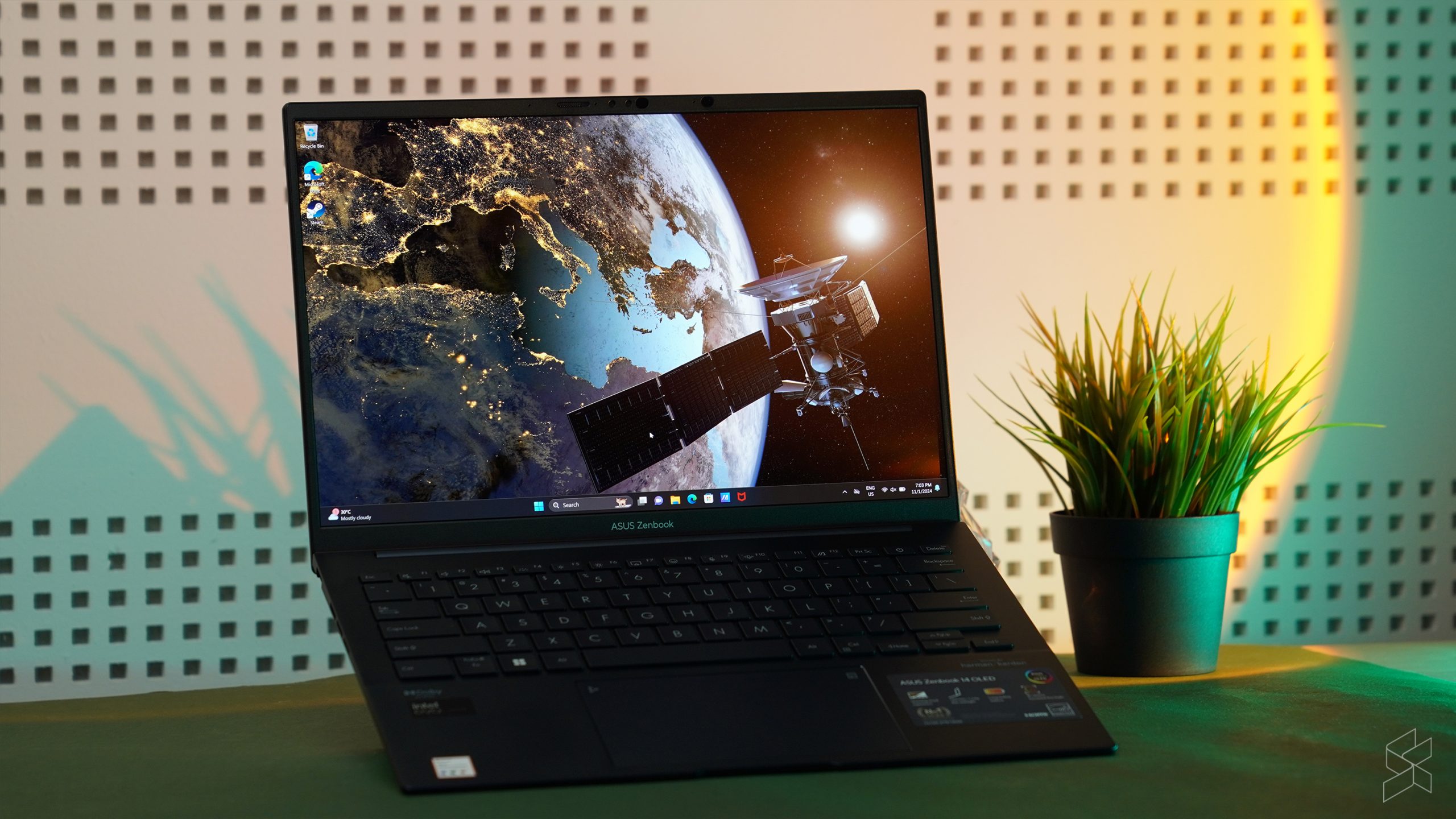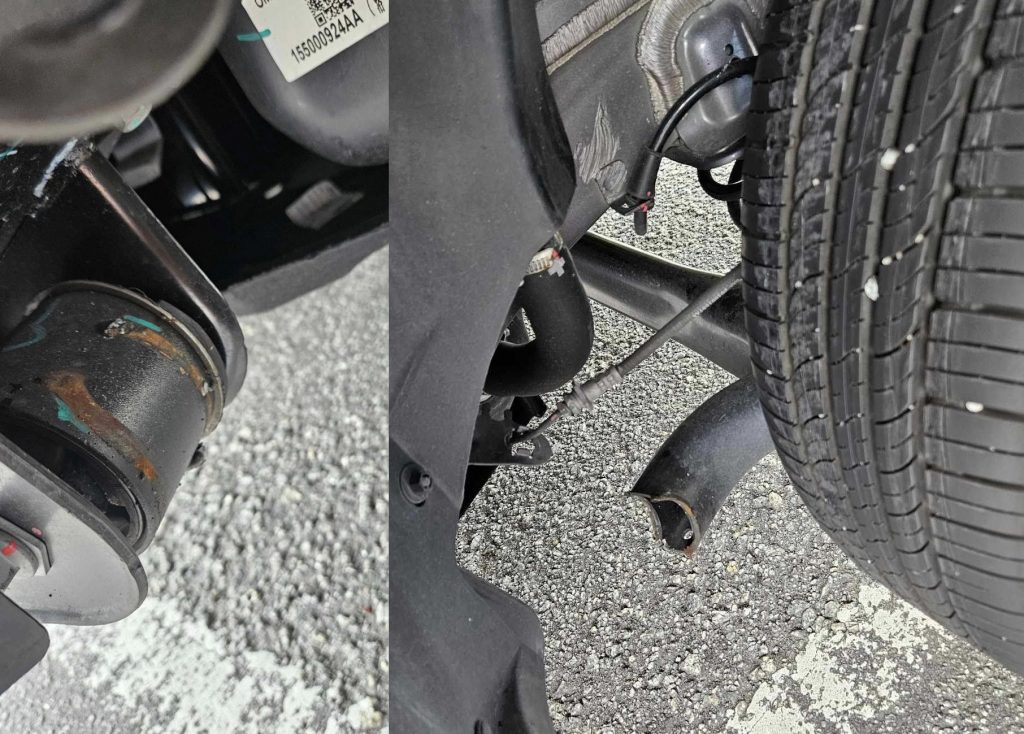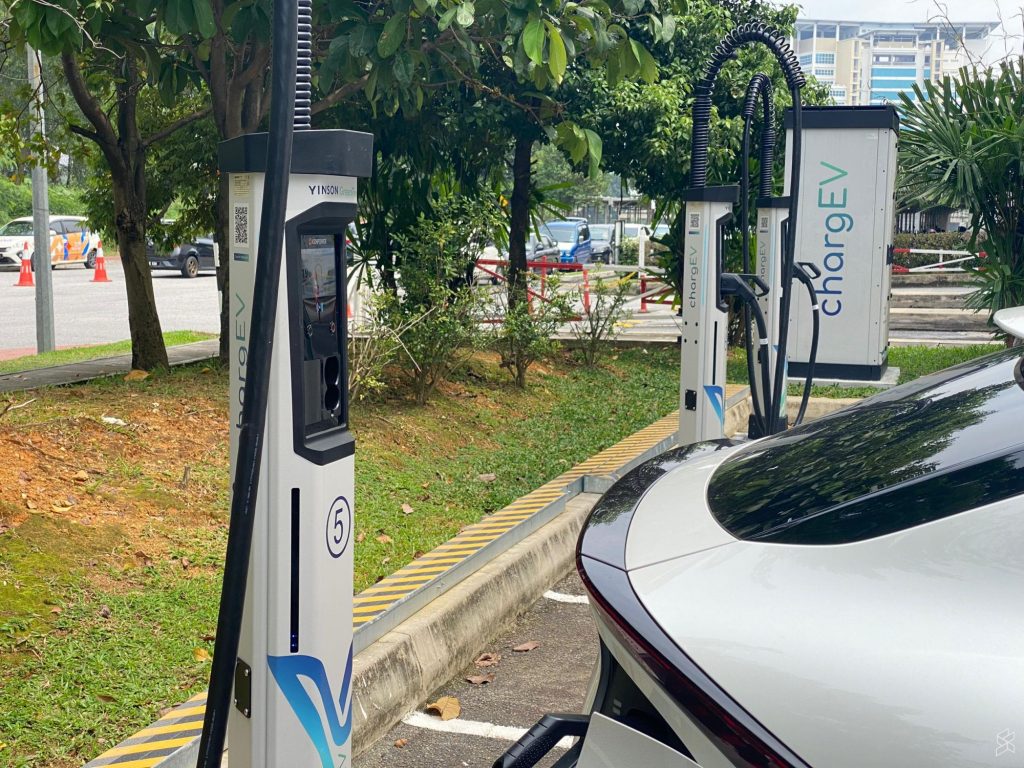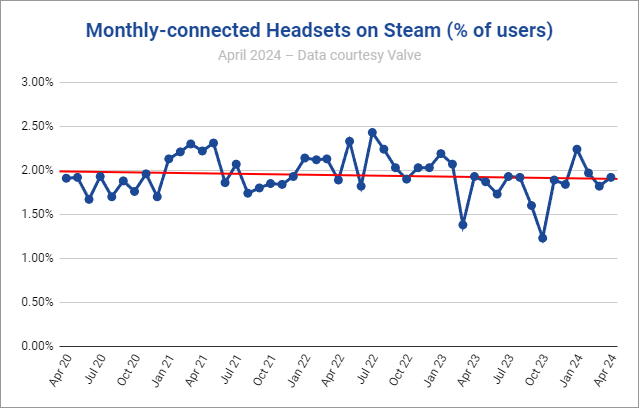The latest Zenbook 14 OLED might not look too different from its predecessors, but Asus’ current generation of their flagship mainstream laptop actually made headlines for being one of the first few devices to be introduced with the new Intel Core Ultra processors under the hood. Aside from the regular performance improvement claims, there was also plenty said about the supposed increase in battery life, all packaged in Asus’ impressively compact and portable chassis.
Of course, we wouldn’t be willing to just take Asus—and Intel for that matter—word’s for it. As such, when they offered one of their brand new laptops to take for a spin, we had to take it on and try out Meteor Lake for ourselves.
Impressive battery life, thanks to Intel
Okay so the biggest upgrade that Asus gave their Zenbook 14 OLED for this generation is undoubtedly the new 14th Gen—sorry, I mean, the new Intel Core Ultra processors based on the Meteor Lake architecture. I won’t go into full detail about what makes Meteor Lake so special compared to previous Intel processors, but essentially this is a whole new tile-based architecture for Intel. The chip itself contains a number of ’tiles’, with there being a compute tile housing the CPU cores, a graphics tile for the iGPU, an SOC tile with an NPU along with an IO tile.
Specifically, the Zenbook 14 OLED we got came with an Intel Core Ultra 7 155H, which packs six performance cores, eight efficiency cores and a further two low power efficiency cores. That gets mated to 32GB of LPDDR5X memory and a 1TB SSD. Looking at synthetic performance, it mostly does just as well as last generation’s Intel Core i7-13700H in Cinebench R23, coming close in single core performance and slightly beating it in multi core scores. That may not sound that impressive until you realise that it’s running at a 28W TDP, compared to the up to 45W TDP the last generation processor has.
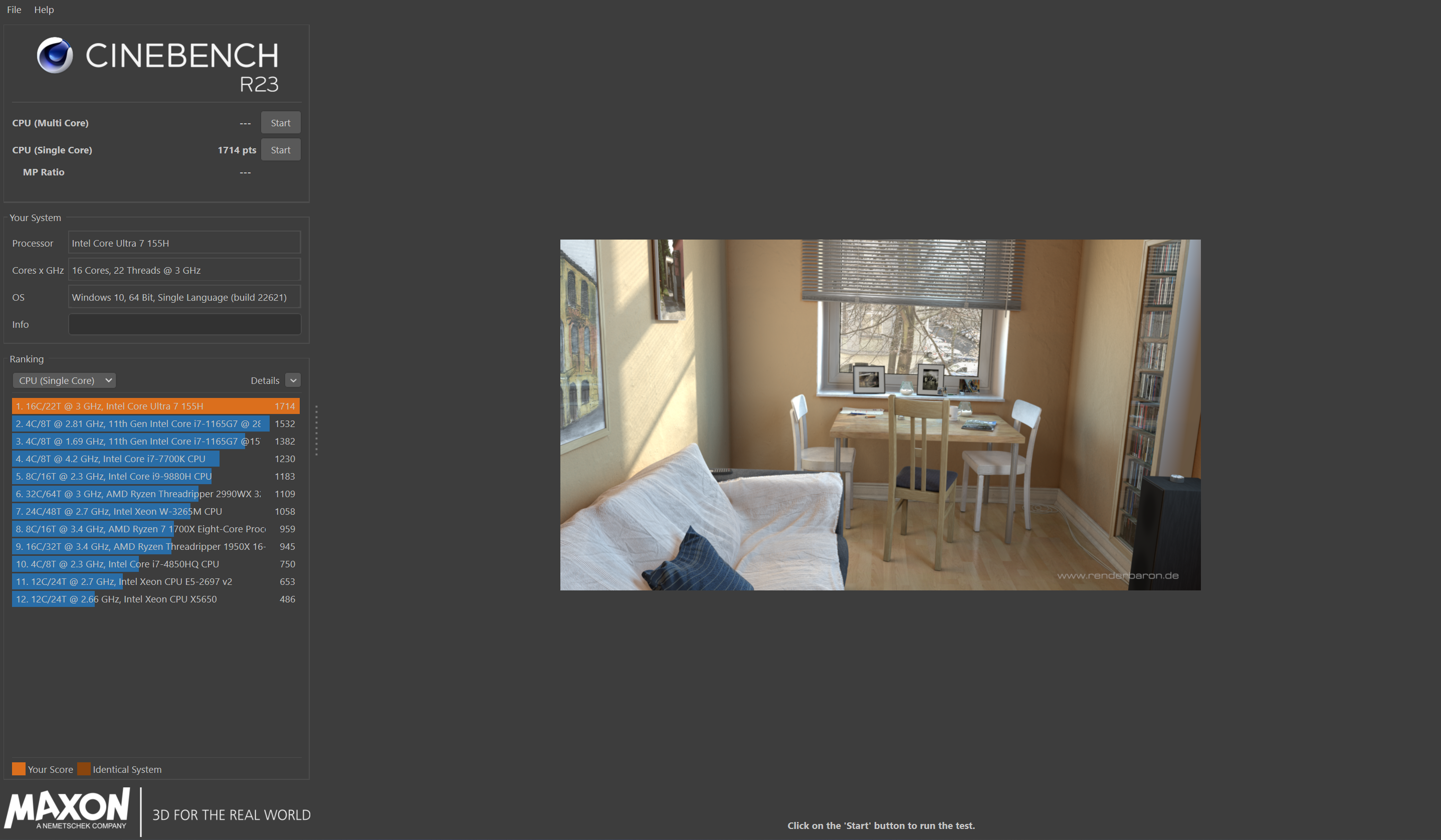
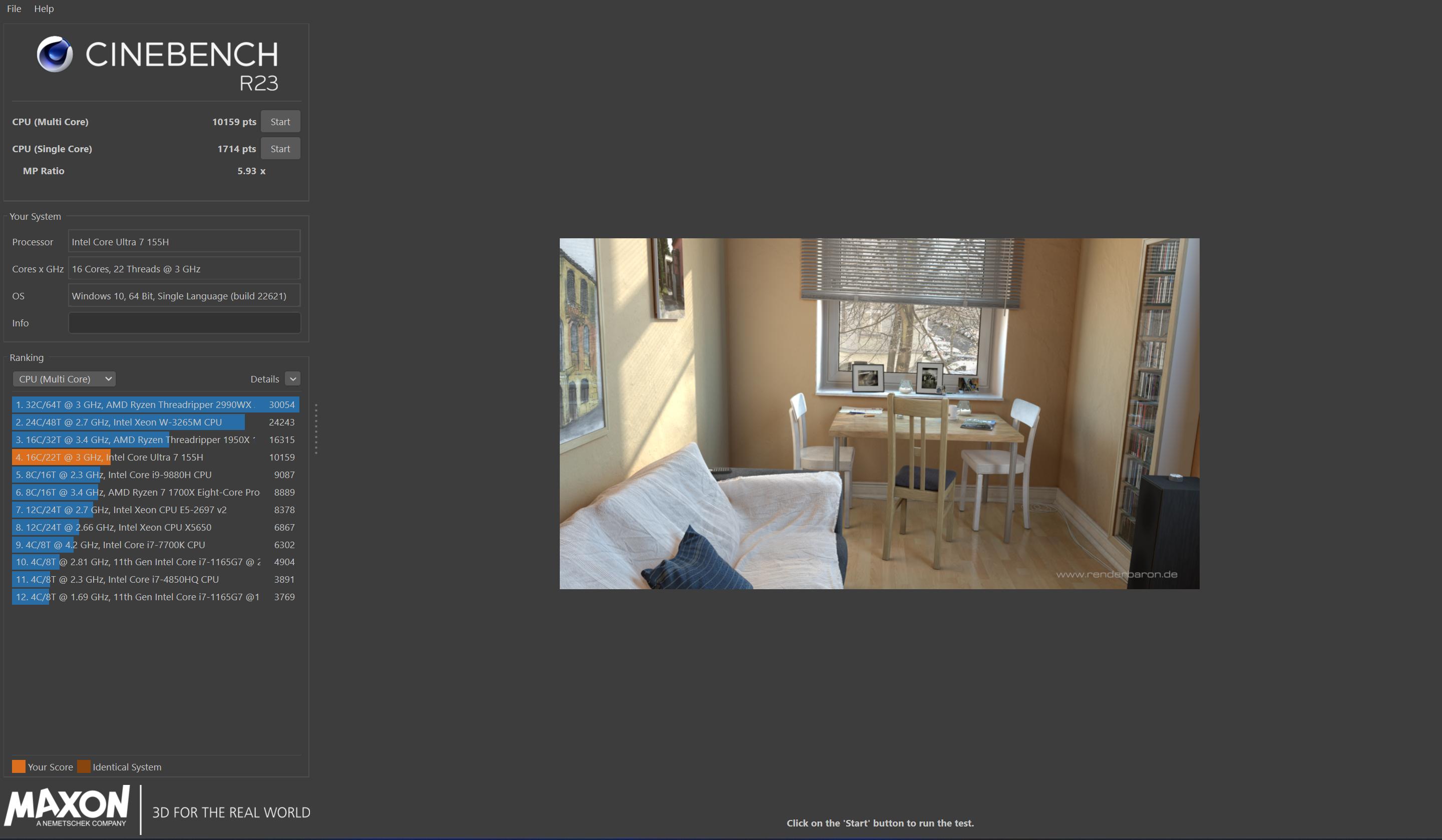
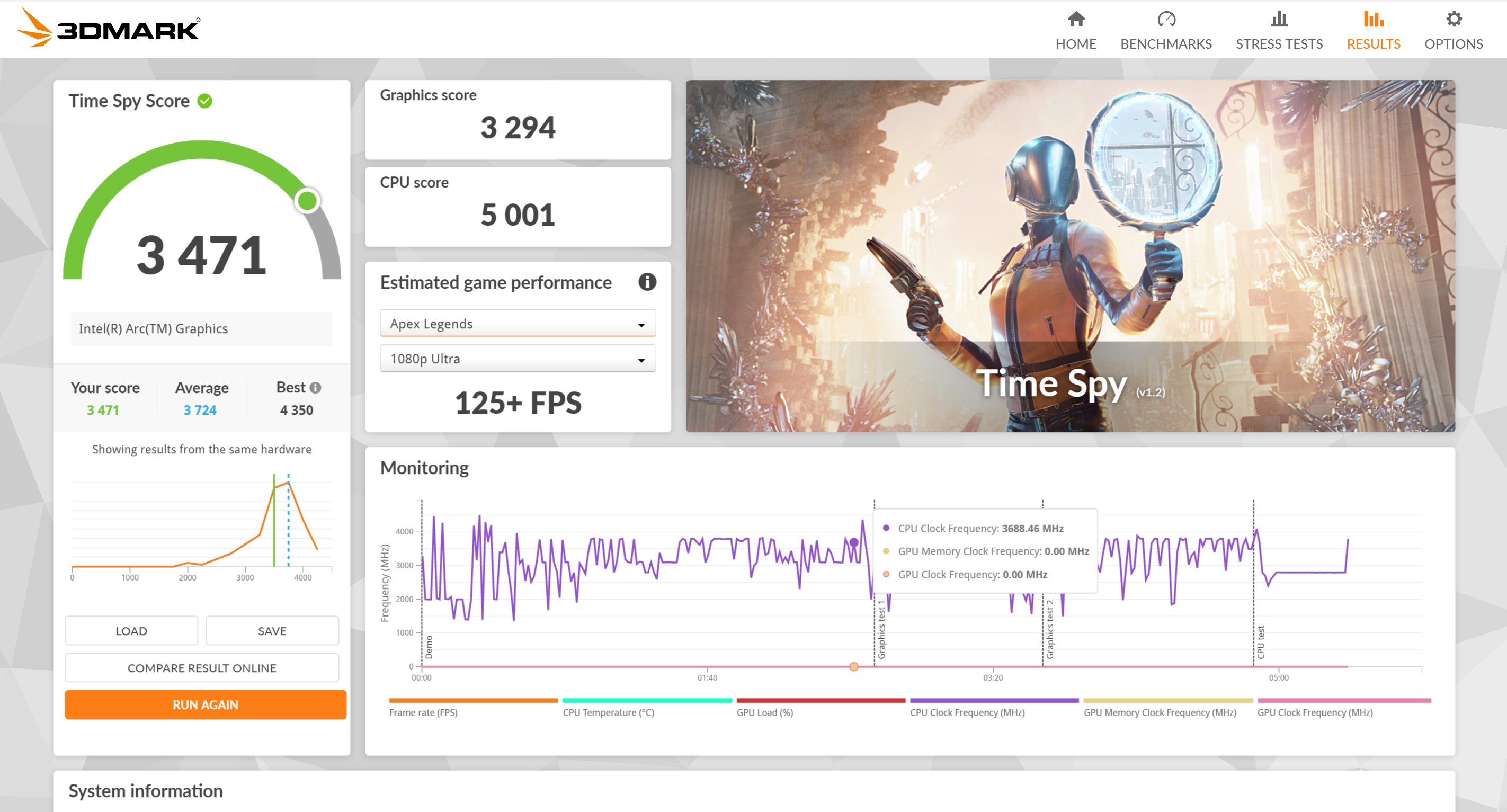
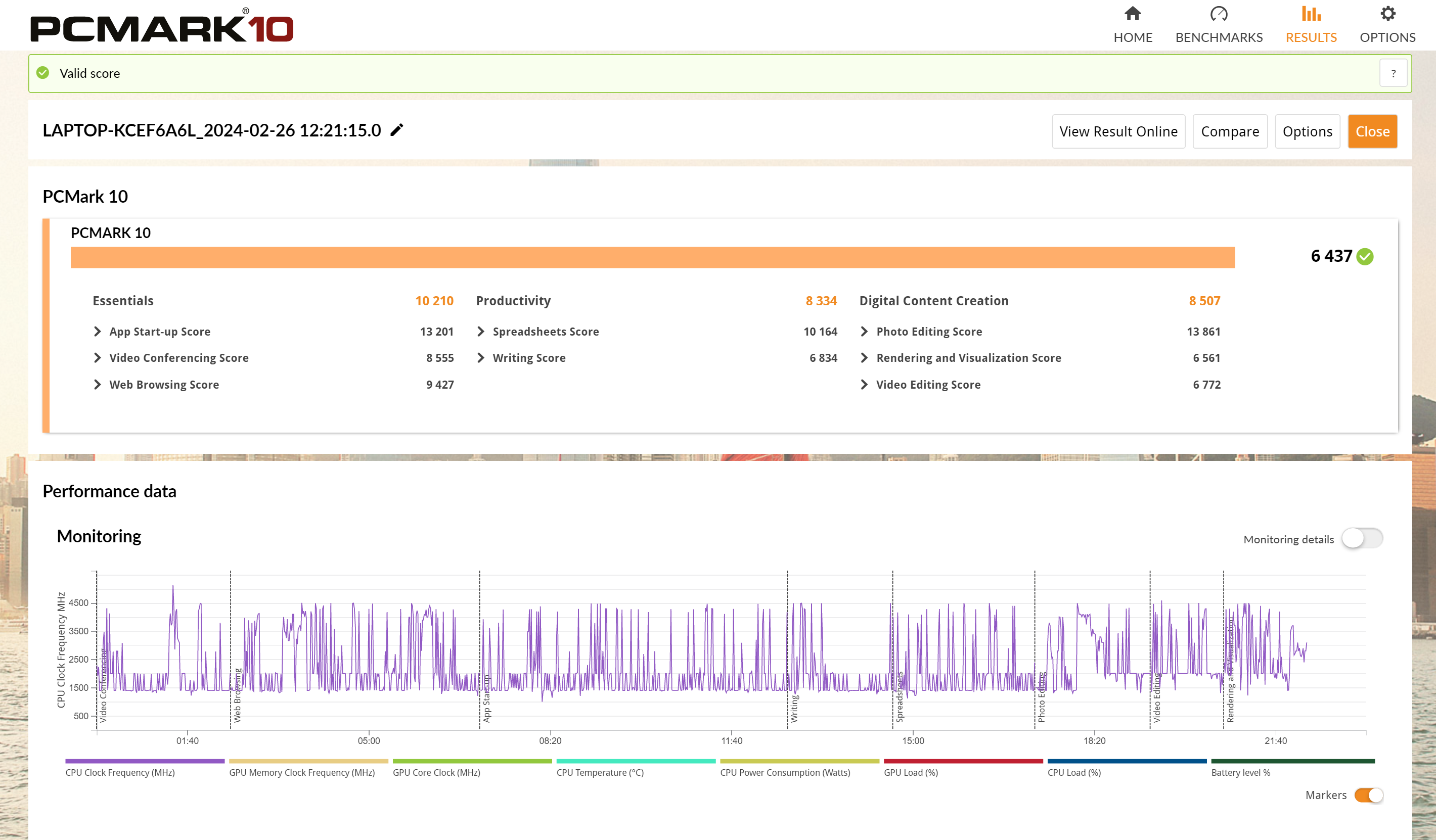
As for day-to-day performance, the Zenbook 14 OLED and the Intel Core Ultra 7 155H unsurprisingly works just swell, being snappy and responsive while typing away on it. It handles my regular suite of windows just fine, with a couple of Google Chrome windows each with multiple tabs along with the likes of Photoshop, Spotify, Discord, Slack and more running in the background. A minor complaint would be that it can get somewhat warm, with temps reaching as high as 90°C during stress tests, but the bright side is that all of that heat is kept away from the keyboard and palm rests, so you won’t really notice much of it.
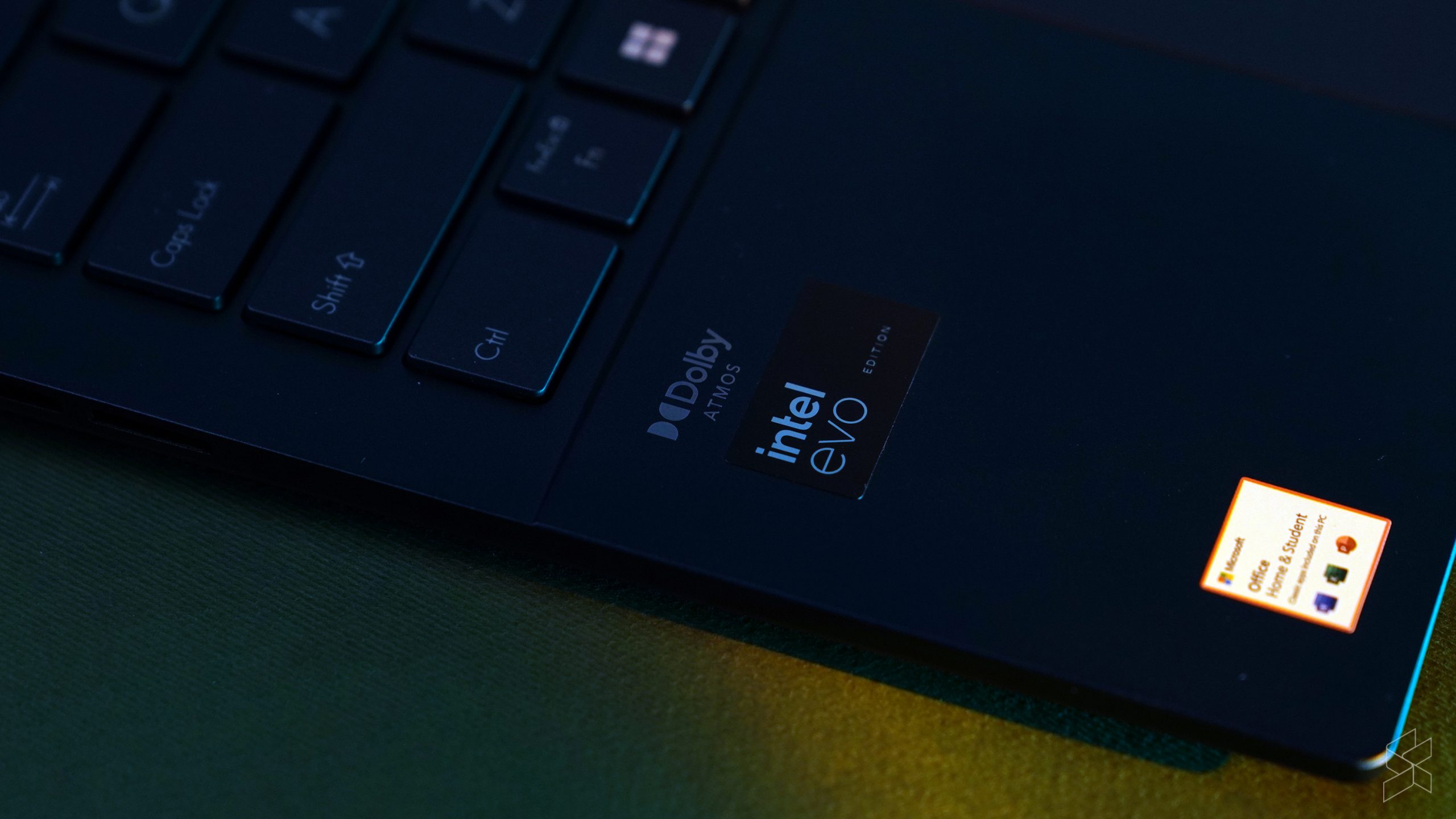
However, it’s the battery life of this thing that impressed me the most. The Zenbook 14 OLED is really one of the first few Windows laptops that I can happily say gave me a real all day battery life. I can start the day off with full or close to full battery life, and by the time I clock out of work, I’d still have around 20 to 30 percent of battery life. That gives me just that little extra juice needed so that I can squeeze another couple hours of YouTube and Netflix once I’m home, all without finding a power plug. Granted, it’s not on the whole time—I’ll sleep it during lunch or when I’m not actively using it for instance—but it’s still very impressive considering I didn’t have to consciously watch over the battery meter, and is maybe the closest Windows laptop I’ve used that can match a MacBook Air in this regard.
Poor gaming, (perhaps) thanks to Intel
Now if you’ve read any reviews of the Zenbook 14 OLED from my fellow media colleagues from other local publications, here’s where my experience will differ quite significantly. I’m not sure if it’s the review unit I was sent or some issues with Intel’s drivers, but the long and short of it is that it just refused to run any games. Or rather, refused to run any games at a playable frame rate and frame time.
See, this is normally the part of the review where I note that ‘oh this isn’t a gaming laptop, but let’s try anyway’ but the Zenbook 14 OLED that I got just absolutely refused to run any games whatsoever. Any attempt at running my usual suite of games such as Cyberpunk 2077 and Total War: Three Kingdoms resulted in only sub-20 frames per second which by itself wouldn’t be so bad if it wasn’t for the frame times spiking up to unplayable territory every other second. Curiously, the only game that it sort of run okay was Overwatch 2, so perhaps you may have better luck in more casual or eSports titles instead.
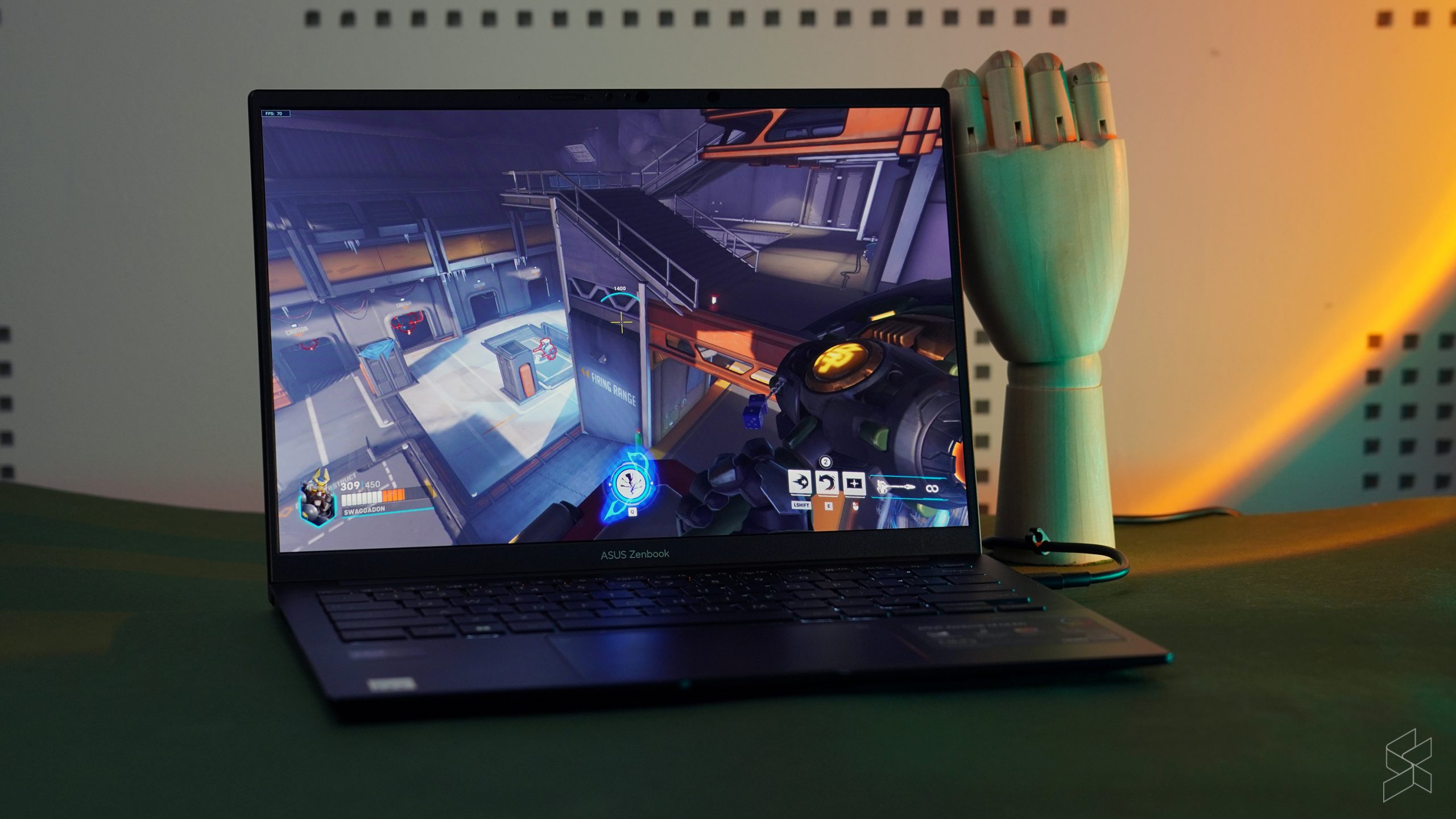
I had mentioned the issue to Asus’ reps before, and as I understand it I appeared to be the only person that they know to be having this issue. I had tried various different drivers, ranging from the stock graphics drivers that the laptop came with out of the box, to Intel’s latest drivers as well as Asus’s recommended drivers. None of them worked well enough though which is pretty sad, considering that the Intel Core Ultra 7 155H processor packs an Intel Arc GPU with eight full Xe cores and is apparently powerful enough that MSI used that same chip in their MSI Claw gaming handheld.
In any case, the lack of gaming potential here wasn’t too big of a deal in the bigger picture anyway. I mean, don’t get me wrong it would’ve been nice to have been able to play a couple of games outside of work, but the Zenbook 14 OLED is very much a productivity laptop not designed for games in the first place. Besides, it seems that I was the only one to have this issue anyway, so it could just be an exception rather than the rule.
If it ain’t broke don’t fix it
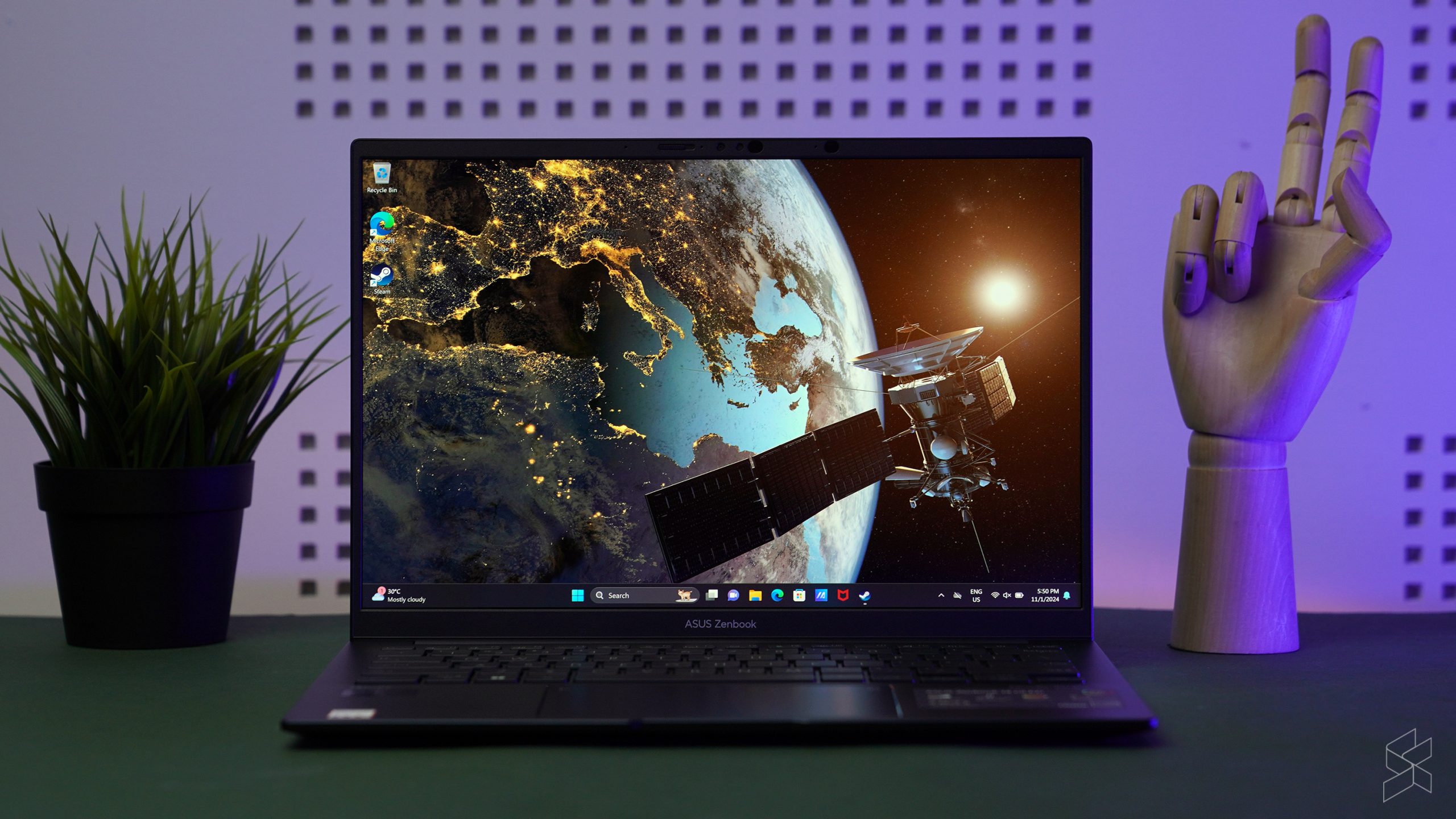
Other than the new Intel Meteor Lake processors though, for the most part the current Zenbook 14 OLED is very similar to the Zenbook 14 OLED that I reviewed two generations ago. They share the same design and chassis along with what appears to be mostly the same display too, which isn’t really a bad thing at all.
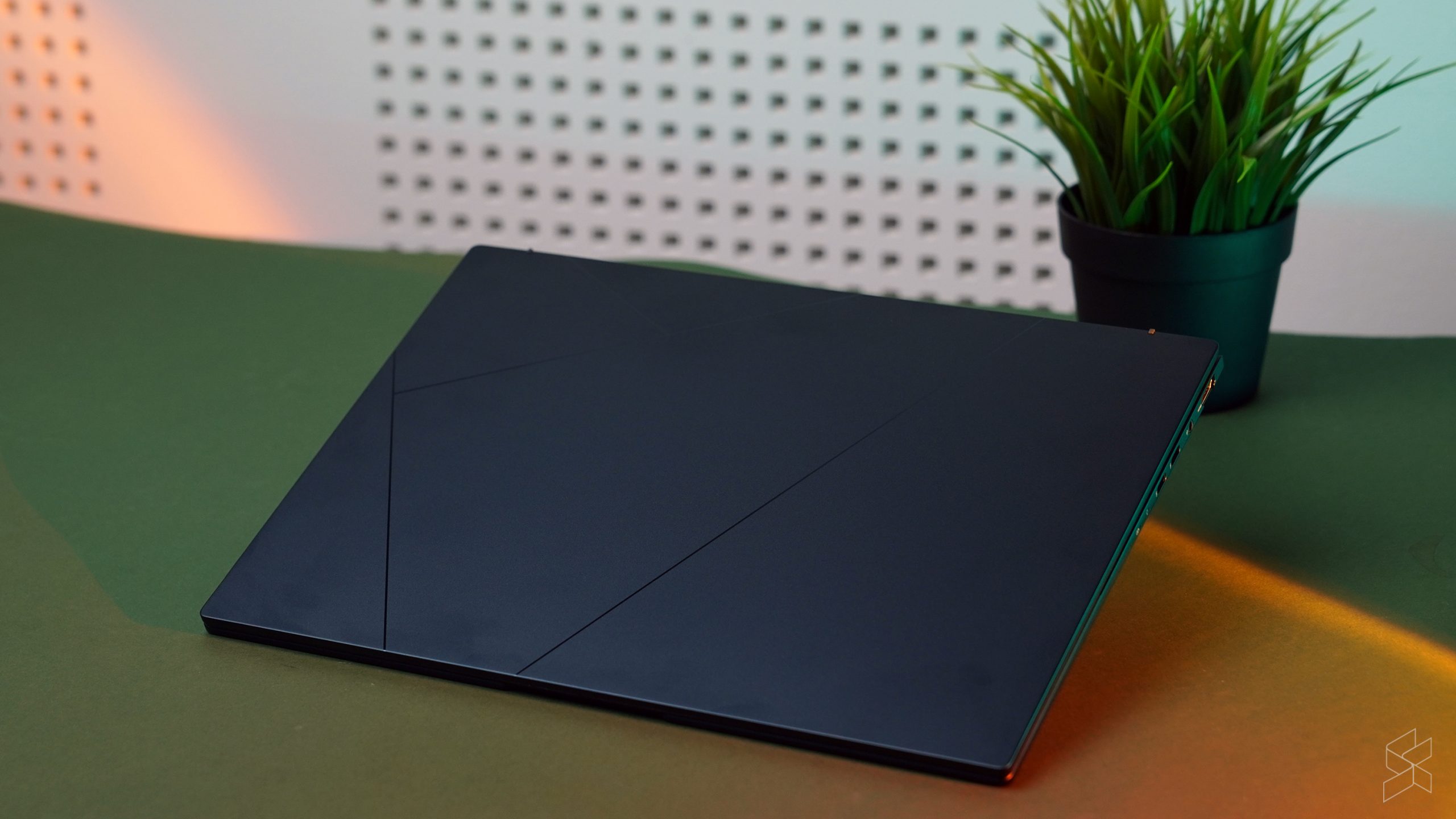
The design for example still maintains that sleek aluminium chassis with the Asus monogram etched onto the lid, with a sturdy feeling build quality that mostly inspires confidence in the Zenbook 14 OLED. Of course, it certainly helps that it’s only 1.2kg light and 14.9mm thin, making it extremely portable and easy for be to carry around in just one hand as I go around the office to procrastinate ask my colleagues important questions that are definitely, undoubtedly very crucial to work.
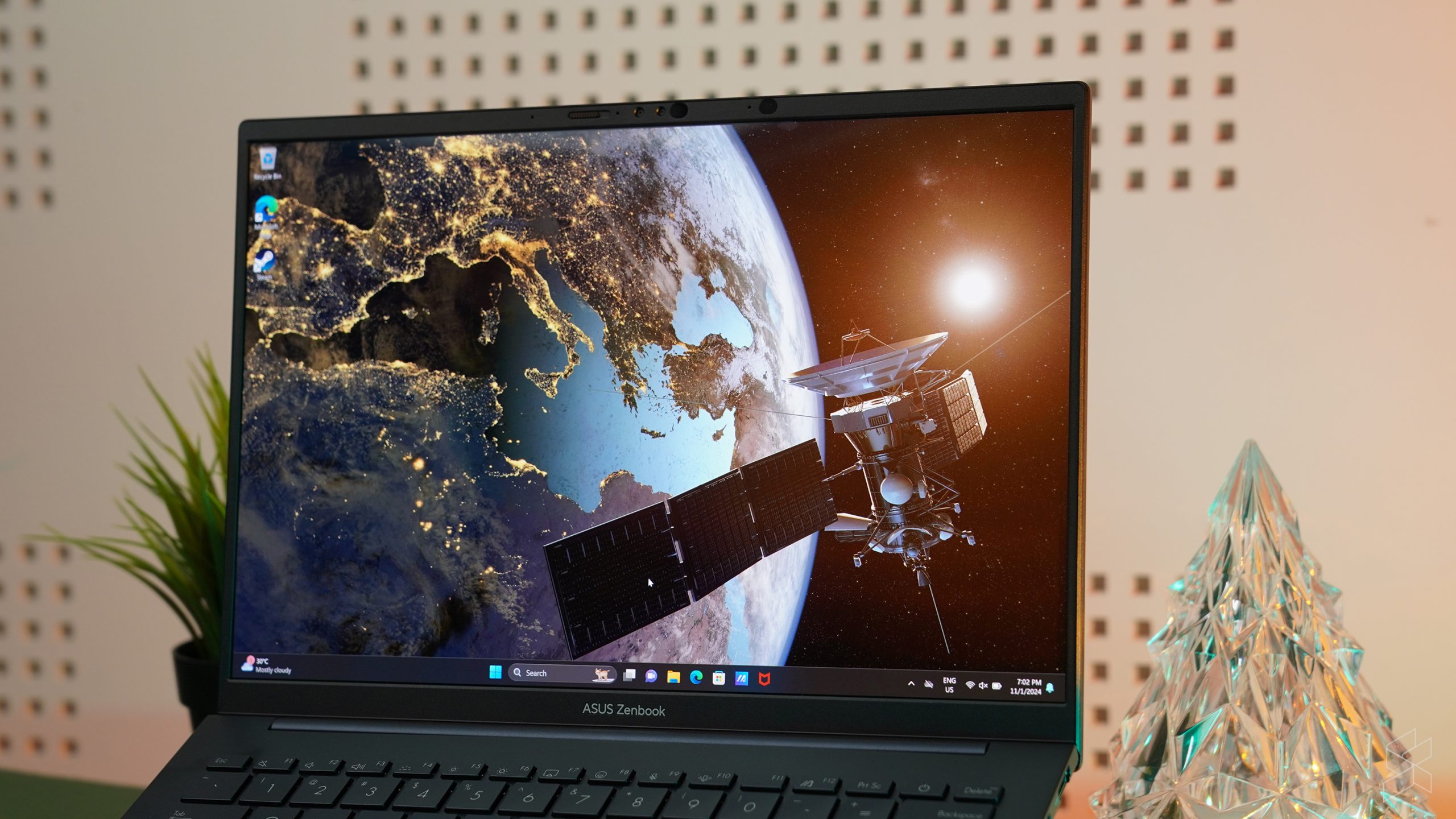
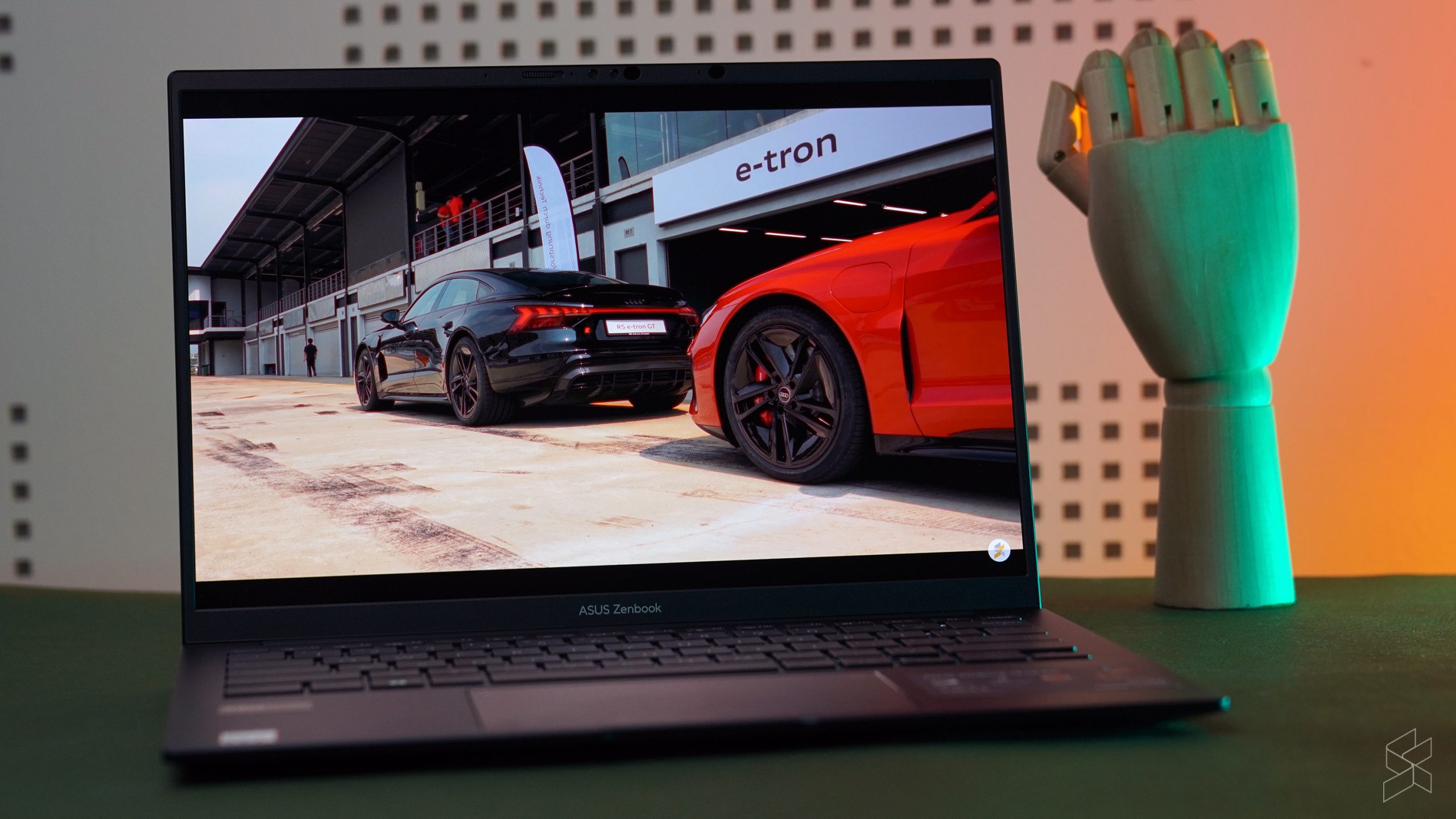
That being said though, the true magic of the Zenbook 14 OLED only happens once you’ve lifted up the lid and turn on the device. As has always been the case with Asus’ Zenbook lineup, the OLED display here is simply stunning. If you’ve only ever used regular IPS displays on your laptops instead of the likes of OLED and to a certain extend MiniLED displays, the brightness will take you by surprise—in a good way of course.
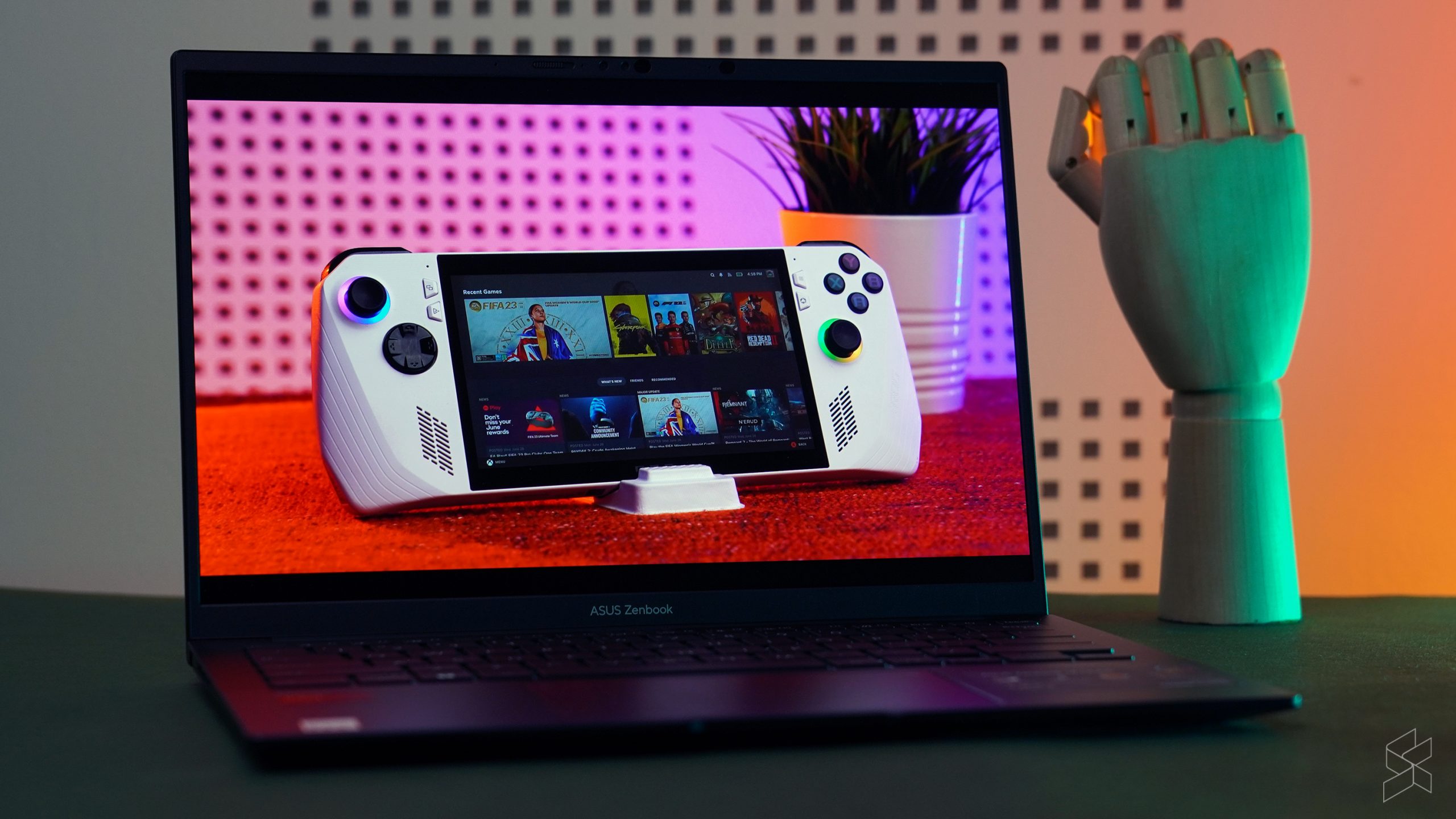
The 14-inch OLED panel here pushes a 2880 x 1800p resolution in a 16:10 aspect ratio capable of a typical brightness of 400nits and a peak brightness of 600nits, with full coverage of the DCI-P3 colour gamut as well as DisplayHDR True Black 600 certification. Speaking of the latter, the OLED panel here will offer the darkest blacks you can imagine which again for those of you making the step up from regular laptop displays will be a huge upgrade.

The display is simply one of the best not just for watching content but also for work, thanks to the taller aspect ratio. Oh, and the layer of Corning Gorilla Glass over it is certainly another nice quality of life feature to have. As for its audio, it’s…. surprisingly decent. Compared to the previous Zenbook 14 OLED that I reviewed, the latest laptop gets louder than before and is tuned fairly well too, putting it close to the likes of the MacBook Air. It’s only really lacking in the bass department, though considering how thin it is, it still sounds pretty damn alright.

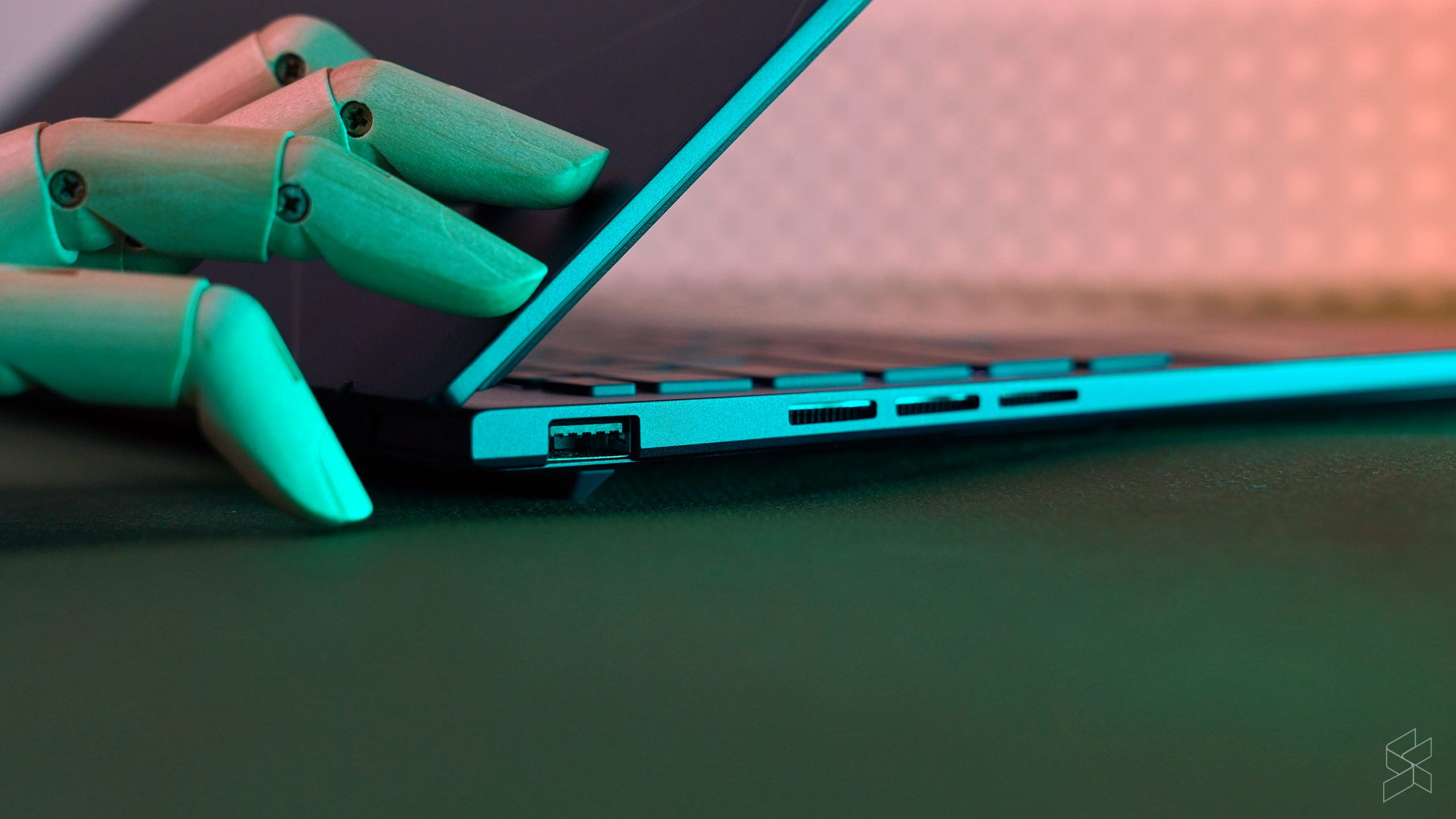
Everything else about the Zenbook 14 OLED was just as good, with the keyboard having a lot of travel to it and being comfortable to type on with little to no deck flex whatsoever, though the keys themselves could use just a tiny bit more tactility to it. The touchpad though was excellent, and so is the selection of I/O ports here with Asus packing in two USB-C Thunderbolt 4 ports, a HDMI 2.1 port, a 3.5mm combo audio jack and a USB-A 3.2 Gen 1 port—that last one is perhaps something that I’ve missed the most since switching to a MacBook for my daily driver.
Almost the best new Windows thin-and-light around
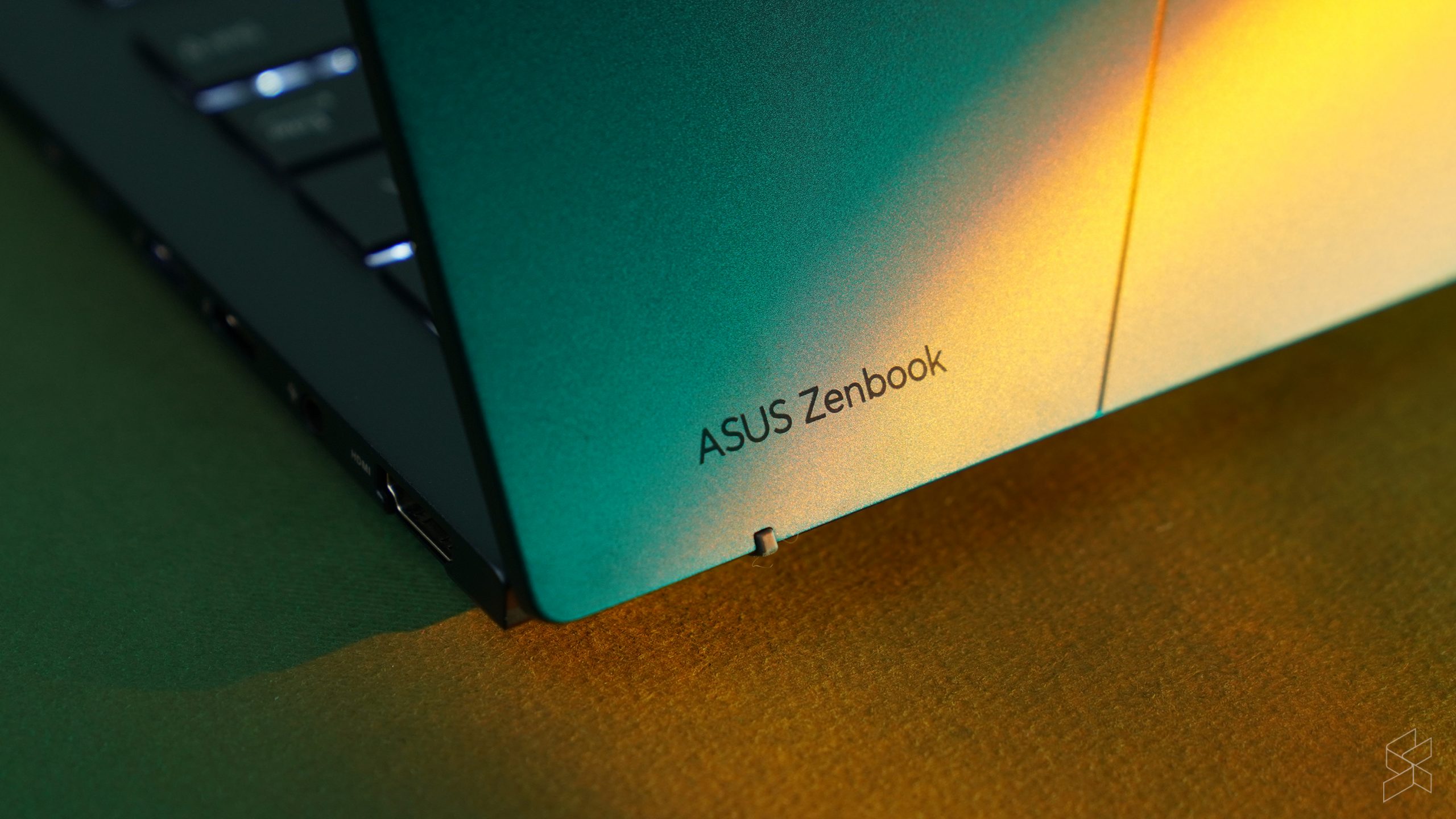
Overall, despite the issues I had with the gaming capabilities of the device, I was still very impressed with the latest iteration of the Zenbook 14 OLED. Mostly, this is because of how good its battery life was. The lacklustre battery life of Windows laptops of yesteryear was among the biggest reasons behind why I ended up making the switch to Mac permanent.
That being said, the Zenbook 14 OLED certainly surprised me in how well it’s battery held up, with it being among the few Windows devices that genuinely impressed me in terms of battery life. Combined with how thin and light this thing is, and what you end up with is sort of the MacBook Air killer that I wished the Windows side of things could’ve come up with years ago.
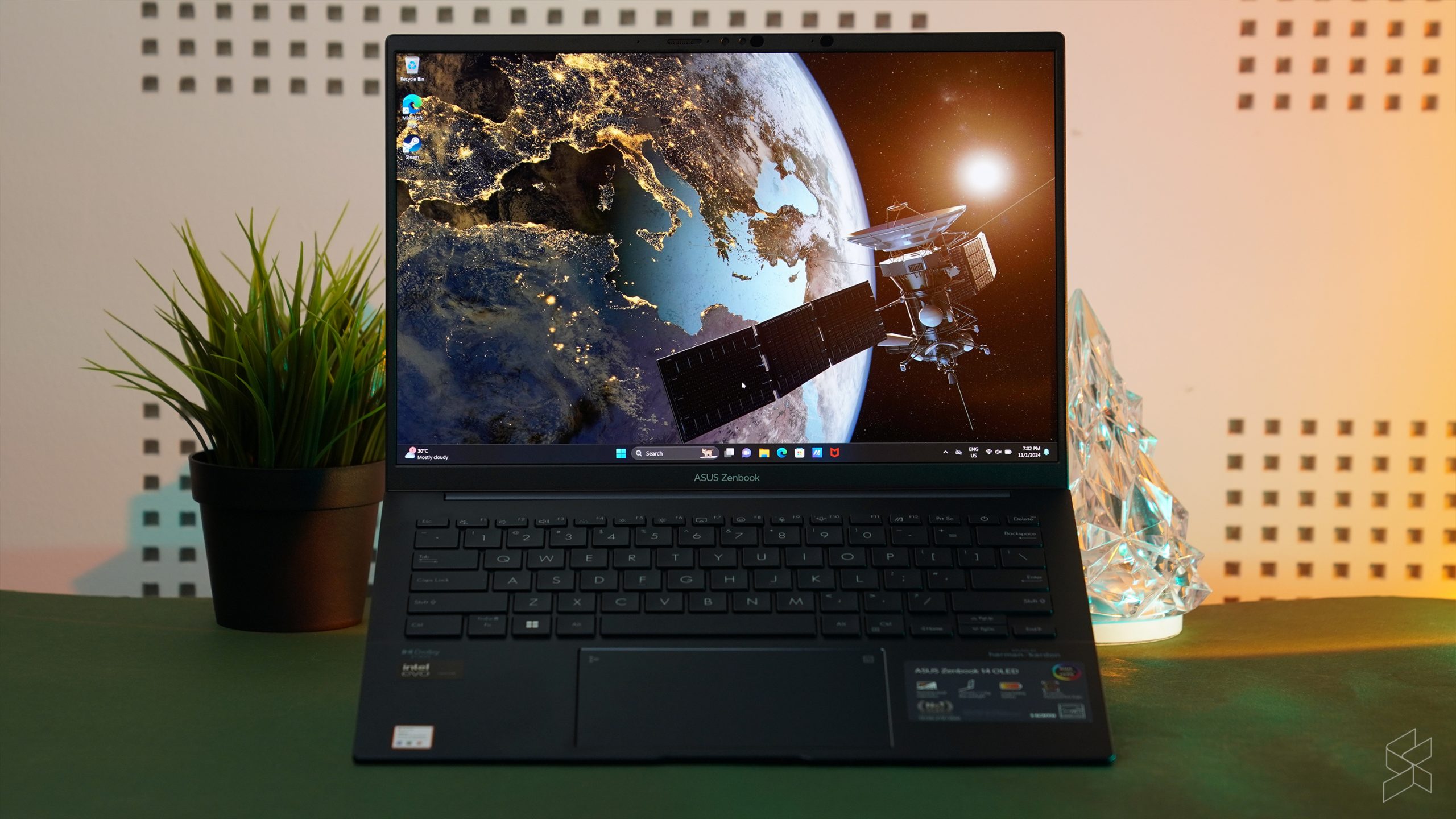
I say almost though, because it’s just a little bit too expensive in my view to compel someone enough to switch from a MacBook Air to this laptop instead. Originally priced at RM5,999 when it debuted in Malaysia a couple of months ago, the Zenbook 14 OLED with the Intel Core Ultra 7 155H, 32GB of RAM and 1TB of storage that we have here now goes for RM6,299 thanks to inflation. We understand that the Intel Core Ultra 5 125H version with 16GB of RAM and 512GB of storage, originally priced at RM4,499, has also received a price hike, but we’re still waiting to know its revised price. It should be pointed out that the MacBook Air, despite starting at RM4,799 for the M2 and RM5,199 for the M3 version, comes with only 8GB of memory and 256GB of storage stock in comparison.
Nevertheless, if you’re looking for a productivity focused thin-and-light Windows laptop, the Zenbook 14 OLED is certainly up there in my opinion. I mean, there’s the fantastic battery life, the great OLED display, actually alright speakers for once and a typing experience that’s decent too. It’s just a shame then that I couldn’t get it firing on the gaming side of things, as that would’ve been the cherry on top, but I understand that for most people looking at the Zenbook 14 OLED in the first place, gaming is perhaps the least of their concern. If that sounds like you, then the Zenbook 14 OLED may just well be your next daily driver.

